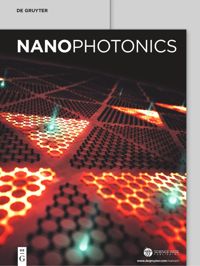Physicists drive antihydrogen breakthrough at CERN
https://phys.org/news/2025-11-physicists-antihydrogen-breakthrough-cern-technique.html
#HackerNews #Physicists #Antihydrogen #CERN #Breakthrough #Science #Innovation
Physicists drive antihydrogen breakthrough at CERN
https://phys.org/news/2025-11-physicists-antihydrogen-breakthrough-cern-technique.html
#HackerNews #Physicists #Antihydrogen #CERN #Breakthrough #Science #Innovation

The intrinsically disordered periodic architecture inherent in natural biomaterials exhibits significant potential for serving as resonant cavities, enabling the development of eco-friendly, biocompatible, and cost-effective microlaser systems. In this study, we demonstrate a biomaterial-based random laser utilizing birch leaf–derived carbon dots (CDs) as the gain medium. CDs ethanol solution was introduced into the peanut via microinjection, successfully fabricating CDs-doped peanut samples that preserved the fluorescence characteristics of the CDs in solution. Random lasing was observed on multiple surfaces of the CDs-doped peanut under pulsed laser excitation, with varying thresholds across different regions. This demonstrates that the natural disordered microstructure of biological materials can facilitate random lasing. Analysis of surface morphology and scattering patterns indicates that the lasing mechanism arises from multiple light scattering within the disordered structure of the peanut surface, forming coherent feedback loops. Furthermore, the intrinsic biocompatibility of bio-derived CDs effectively addresses the persistent toxicity concerns associated with synthetic laser materials. Such biomaterial-based random lasers could enable eco-friendly and cost-effective photonic applications.
The #Universe “Will End in a Big Crunch,” #Physicists Warns
https://scitechdaily.com/the-universe-will-end-in-a-big-crunch-physicists-warns/

Dark-energy evidence suggests the universe will end in a “big crunch” roughly 20 billion years from now. The universe is nearing the halfway point of what may be a 33-billion-year lifespan, according to new calculations by a Cornell physicist using updated dark energy data. The findings suggest t